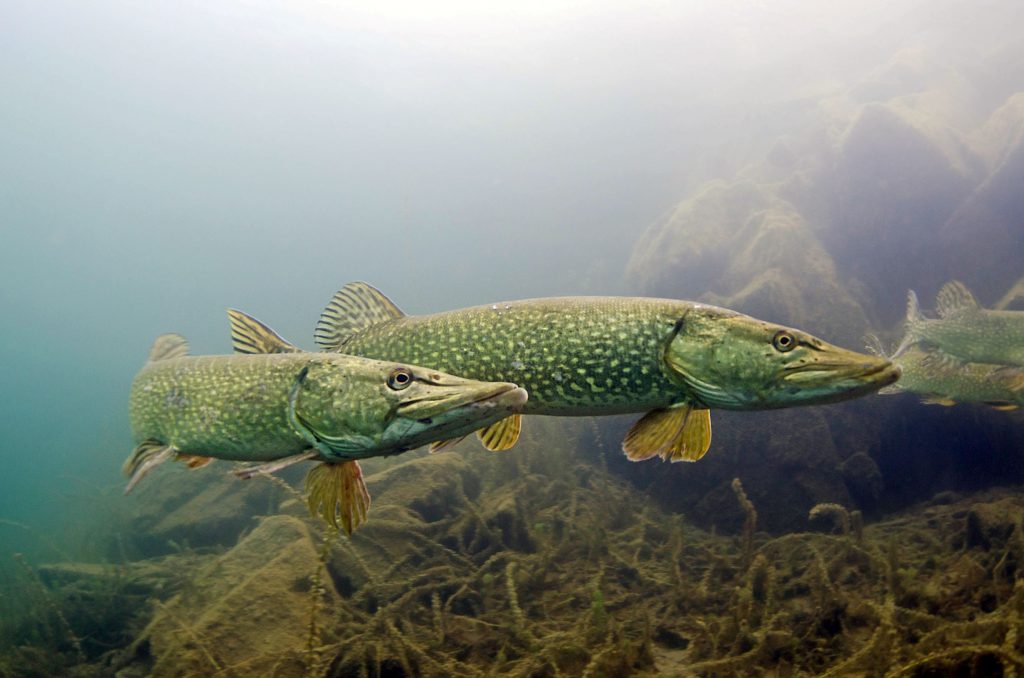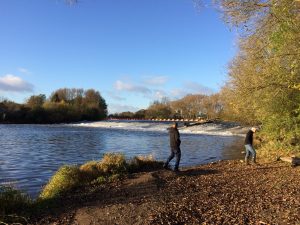Characteristics
Pike are very large (up to 1.5m) and predatory. They have long, slender bodies with a very large head with a large mouth full of razor-sharp teeth. They are typically a light shade of green with yellowish speckled markings along their bodies.
Diet
Pike prey predominantly on other fish by ambushing from a camouflaged position. They have also been recorded killing and eating other smaller, or similar sized, Pike. During the spring and summer they can also take small waterfowl like ducklings although they are often unfairly blamed for the lack of water fowl when the true culprit is either other birds eating the eggs or mammals like stoats and introduced mink. In parts of Europe pike are eaten by humans and are considered a delicacy with its firm flaky flesh.




